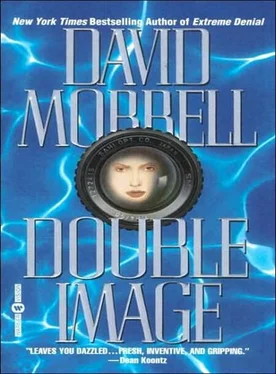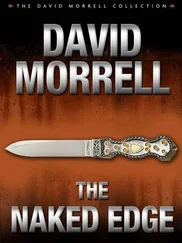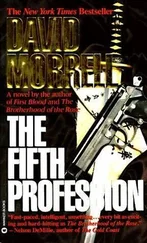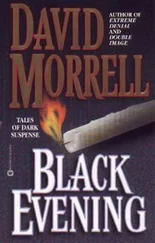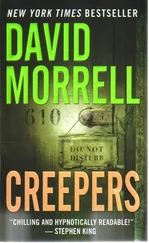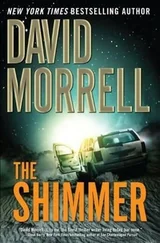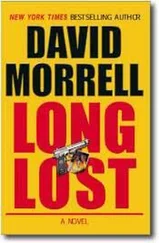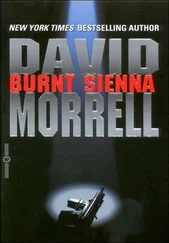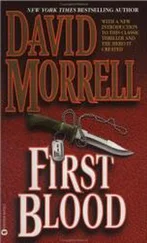“Is that a significant last name, too?”
“You bet. You’ll understand why in a minute. She opened more clothing boutiques, ran them for a while, then turned them over to a manager and left on a yearlong around-the-world vacation. That was six months ago.”
“Six months?” The number nudged at something in Coltrane’s memory. “A neighbor of hers told me that’s when Tash showed up in Malibu.”
“As much as the investigator could determine, nothing happened in San Diego. He thinks she’s planning to keep it uncontaminated. A home base. But Malibu was another matter. Melinda Chance or Tash Adler or whatever you want to call her was up to her old tricks – with a new variation that added more excitement. She pretended to be stalked so she could have policemen around her, big men with big guns, whom she would manipulate to fight over her.”
“Pretended to?” Coltrane said. “No, you don’t understand. Duncan Reynolds was in fact stalking her. He-” Instantly, another piece of the puzzle slid horrifyingly into place. “Jesus, he wasn’t stalking her. He was her accomplice . He was doing what Tash asked him to do so the police would believe she was being threatened and she could manipulate her bodyguards until they turned on one another. That explains how Duncan knew about the photographs I took of him. Tash is the only one who could have told him. She must have ordered him to take the evidence and cover her tracks. And then-”
“What’s the matter?”
“What else was stolen?” Coltrane sprang to his feet.
AS COLTRANE SCRAMBLED DOWN THE STAIRS, he heard Jennifer running after him. Frantic, he reached the vault, unlocked it, and charged inside. He flicked at the light switch without stopping, raced past the shelves, reached the false wall in the far left corner, and shivered from more than the vault’s chill when he stooped to free the catches and pull out the wall.
Behind him, Jennifer’s heels sounded urgently on the concrete floor, but his attention was totally directed toward the hidden chamber, the vault’s glaring overhead lights making him squint toward the shadows in there.
“She’s gone.” His voice broke.
Rebecca Chance’s face no longer peered out at him. The life-sized photograph of her haunting features no longer hung on the back wall of the chamber. He took a half step back, as if he’d been pushed, then moaned and lurched into the chamber, knowing what he wouldn’t find but needing to search anyhow. The effort was worthless. The chamber was empty. Every box of photographs had been removed.
Coltrane spun toward Jennifer. “Duncan didn’t know about this chamber. Tash must have told him. Jesus.” Feeling off balance, he groped for a shelf. “When I confronted her in Big Bear, she denied knowing anything about the negatives or Duncan. It didn’t make sense. Why would she lie? So I drove to Duncan’s house in Newport Beach to confront him . Too late. Several days ago, he shot himself.”
“Duncan?” Jennifer turned pale. “Why would he…”
“Maybe Tash helped him along, the way we assume she helped two of her old boyfriends along. One less piece of evidence, one less person who knew the truth.”
The implications reduced them to stunned silence.
“What about the last names she used? Tell me why they’re significant,” Coltrane said.
“Breuer. Erikson. Young. Miller. Adler. In college, before I got into graphic arts, I thought about a career in psychology. I took a lot of classes in it. The names Erikson and Adler had a lot of associations when I saw them together. That made me think about the other names. They all fit. Every one of them is a famous psychotherapist. Breuer and Adler were colleagues of Freud. Adler was one of his disciples.”
“I never heard of a famous psychotherapist called Young.”
“Spell it differently. J-u-n-g. She’s making a joke. Or she chose the names without realizing the connection among them, a subconscious slip. My private investigator found out that, under each of these names, she went to a therapist in each of the cities she lived in.”
“And what about Miller?”
“Alice Miller. The subtitle of one of her books is Tracing Childhood Trauma in Creativity and Destructiveness .”
Coltrane’s voice was an uneasy whisper. “Childhood trauma?”
“There’s one other thing I have to tell you.”
“You mean it gets worse?”
“She told you her mother was dead. Well, she’s batting a thousand, because that isn’t true, either.”
IN POINT-AND-SHOOT CAMERAS, the viewfinder and the lens have different openings. As a consequence, the image seen through the viewfinder is not quite the same as that received through the lens and recorded on film, making precise framing difficult. The difference between what the viewfinder sees and what the lens sees is known as the parallax effect, and that is what Coltrane suffered now. What he had thought was happening was so at odds with what had truly been happening that the parallax threatened to drive him insane.
At ten the next morning, after he and Jennifer had caught a 7:00 A.M. flight to Oakland, he walked apprehensively along a corridor in the Redwood Rest Facility. In room after room, aged men and women lay in beds. A recreation room revealed a dozen residents in wheelchairs watching a game show on television. In the hallway, a few residents managed to get around with the aid of walkers. Coltrane nodded respectively to them, then stopped where a white-uniformed male attendant waited outside a room.
The attendant was in his twenties, with wire-rim glasses and his hair tied back in a ponytail. “You’d better prepare yourselves. The odds are, she won’t know you.”
“I don’t expect her to,” Coltrane said. “It’s been years since we met,” he lied. “The last time I saw her was when we lived on the same street in Sacramento. But I have these photographs I took of her daughter.” Coltrane held up a packet. “And when her daughter found out I was coming to Oakland for a photo assignment, she asked me to visit her mother and give these to her.” The camera hanging from Coltrane’s neck gave credence to his story.
“Sometimes her language can be a little frank.”
“No problem. I admire elderly women who speak their mind,” Jennifer said.
“Well, maybe frank isn’t the right word,” the attendant said.
Coltrane tilted his head in puzzlement.
“ Shocking would be more accurate,” the attendant said. “But who knows, you might get lucky and catch her in one of her occasional ladylike moods. The doctor said the photographs you’re bringing might improve her mental outlook. Nothing else has, so let’s hope.” The attendant reached for the doorknob. “Just give me a minute to go in and see that she’s presentable.”
“Take all the time you need,” Coltrane said. While the attendant went in, his apprehension swelled.
“So far so good. The story about the photographs worked,” Jennifer said.
“I wish it hadn’t. I don’t want to go in there.”
The photographs of Tash that Coltrane had brought were from the film he had exposed in Acapulco. He had developed the prints the night before, careful to shield Jennifer from the nudes but inadvertently processing an image that he hadn’t even known he had taken. When Carl Nolan had tried to strangle him with the camera strap, Coltrane had fumbled to attempt to pry the hands away and had accidentally pressed the camera’s shutter button. The resultant image, tilted on a forty-five-degree angle, showed the blur of what might have been the side of a hand on the right and the blur of what was possibly a shoulder on the left. Between them, Tash’s face was distinct. Coltrane had never seen an expression of such animalistic delight. He had almost been embarrassed to look at it, so open was the sexual pleasure that she took from watching Carl and him fight because of her.
Читать дальше
